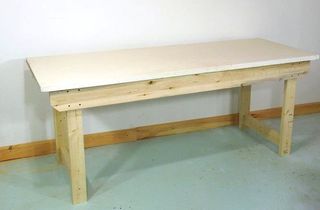|
I put lots of glue on the mortises and tenons. Both surfaces well covered
before assembling the joint makes for better glue joints.
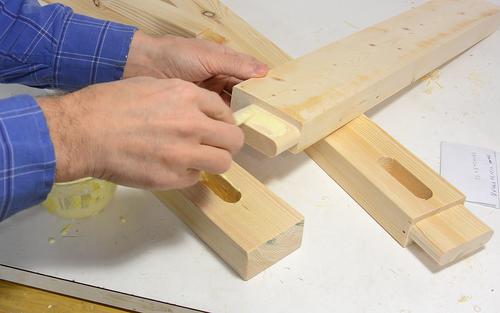
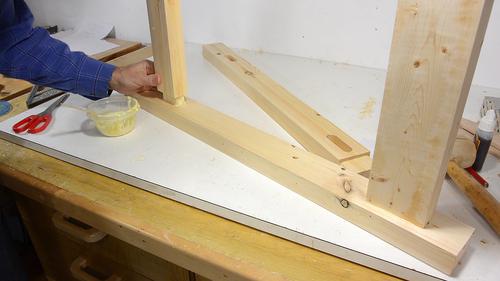
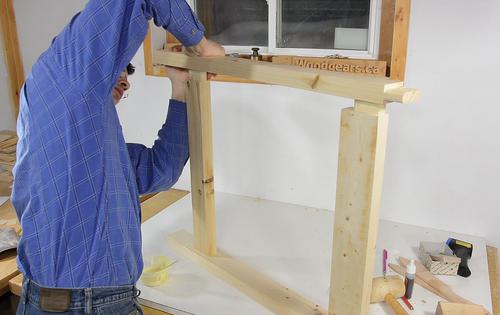 Finish assembling one of the side frames.
Finish assembling one of the side frames.
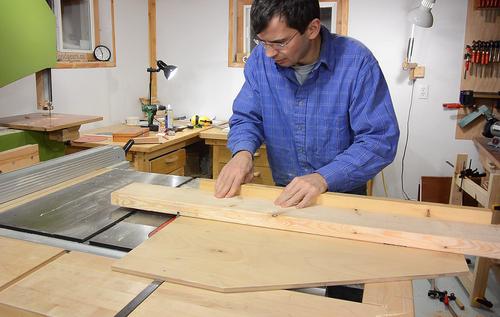
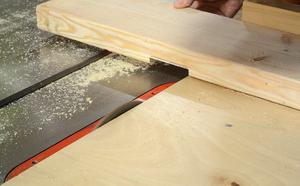 Cutting dadoes for the back rail of the bench. The dadoes fit around the legs to give
the bench side-to-side stability. I'm cutting those out by making a series
of cuts, though I did stack two blades
to get a wider cut each time.
Cutting dadoes for the back rail of the bench. The dadoes fit around the legs to give
the bench side-to-side stability. I'm cutting those out by making a series
of cuts, though I did stack two blades
to get a wider cut each time.
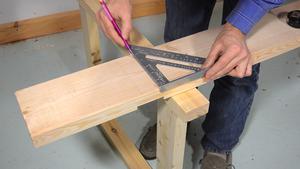
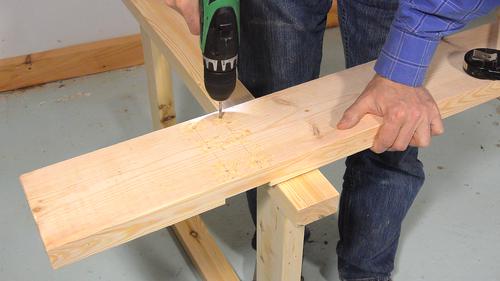 Pre-drilling holes and countersinks in the rail for screwing it on. It's important
to pre-drill shank holes in the rail that gets screwed on so that the screw thread doesn't
engage the rail being screwed on.
Pre-drilling holes and countersinks in the rail for screwing it on. It's important
to pre-drill shank holes in the rail that gets screwed on so that the screw thread doesn't
engage the rail being screwed on.
Even though the exact location of the screws really doesn't matter, it always
looks better when you lay out the holes nicely.
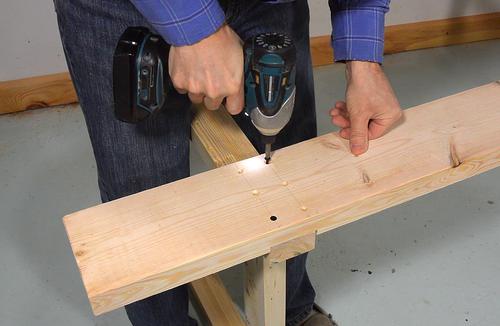
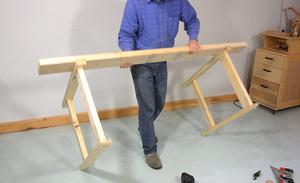 I only attached the back rail with two screws for now because I'm only assembling it for
a test.
I only attached the back rail with two screws for now because I'm only assembling it for
a test.
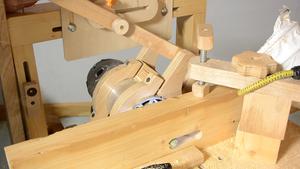
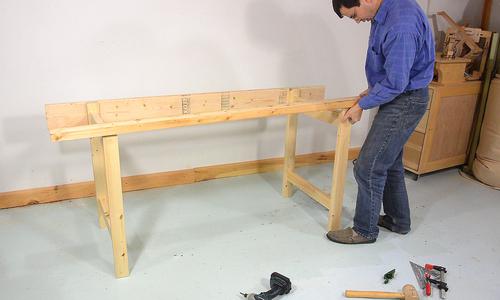 Next, the front rail goes on. The front rail is a 2x4 with two through mortises cut into it
(on the pantorouter, of course) to fit over the tenons in the frames.
Next, the front rail goes on. The front rail is a 2x4 with two through mortises cut into it
(on the pantorouter, of course) to fit over the tenons in the frames.
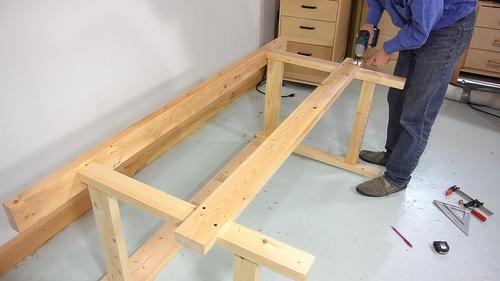 A front rail, with two dadoes, similar to the back rail, is attached about 40 cm down.
This workbench is very similar to this workbench, but with the front
rail moved down so that drawers can be near the top.
A front rail, with two dadoes, similar to the back rail, is attached about 40 cm down.
This workbench is very similar to this workbench, but with the front
rail moved down so that drawers can be near the top.
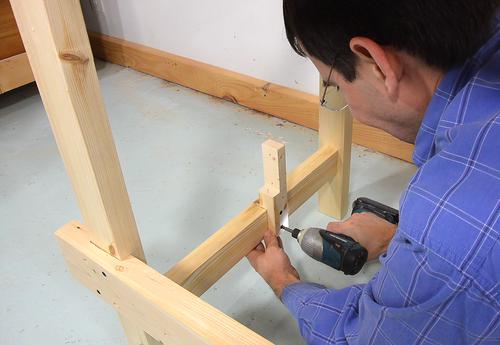
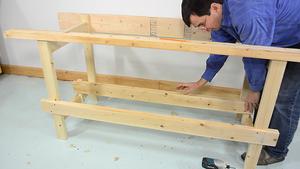 I goofed a bit with where I put the lower rungs in the side frames. These should have been
about 3 cm higher so a side to side member could be placed on them to support
the drawer units. I had to make two support pieces to hold that side to side 2x4
at the right height.
I goofed a bit with where I put the lower rungs in the side frames. These should have been
about 3 cm higher so a side to side member could be placed on them to support
the drawer units. I had to make two support pieces to hold that side to side 2x4
at the right height.
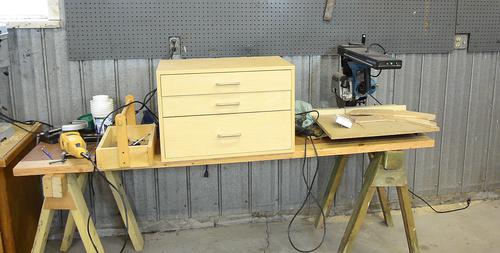 The workbench is meant to replace a temporary workbench made with two
sawhorses. I could have made more sawhorses, but
I figured it would be more fun to make a quickie workbench to free up
the sawhorses instead. And that way, I could make the workbench fit two drawer units,
one of which you can see here. I bought these at a yard sale for $25 for the two of them.
The workbench is meant to replace a temporary workbench made with two
sawhorses. I could have made more sawhorses, but
I figured it would be more fun to make a quickie workbench to free up
the sawhorses instead. And that way, I could make the workbench fit two drawer units,
one of which you can see here. I bought these at a yard sale for $25 for the two of them.
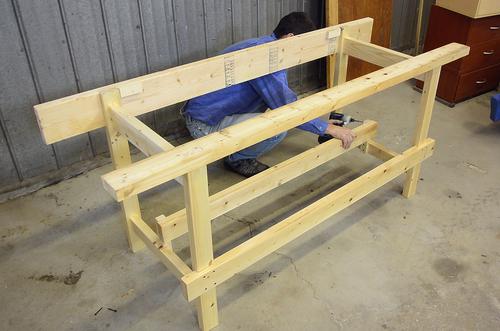 Reassembling the workbench on site...
Reassembling the workbench on site...
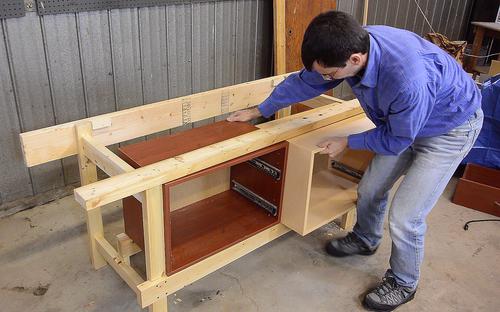
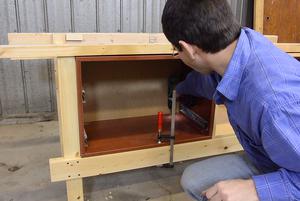 ... and installing the two drawer units. These are screwed down in the back
to keep them from sliding around and to keep them from tipping forward if all the
drawers are opened at once.
... and installing the two drawer units. These are screwed down in the back
to keep them from sliding around and to keep them from tipping forward if all the
drawers are opened at once.
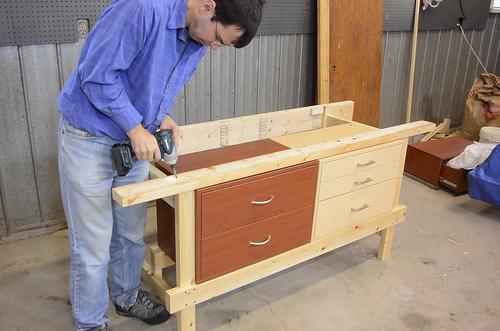 The top horizontal is only held down with screws so I can still take the whole workbench
apart if needed. It was tempting to glue those mortise and tenon joints
for extra rigidity but the whole workbench was rigid enough without.
The top horizontal is only held down with screws so I can still take the whole workbench
apart if needed. It was tempting to glue those mortise and tenon joints
for extra rigidity but the whole workbench was rigid enough without.
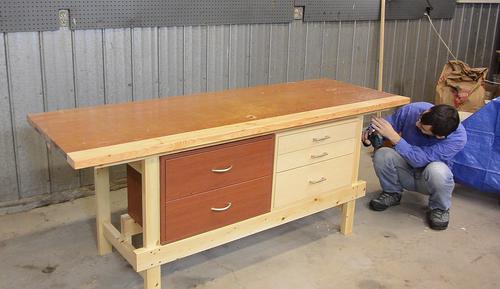 Screwing on the top, from below.
Screwing on the top, from below.
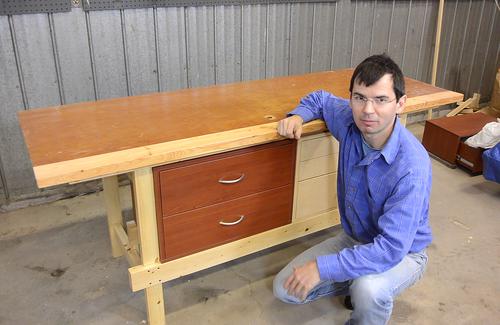
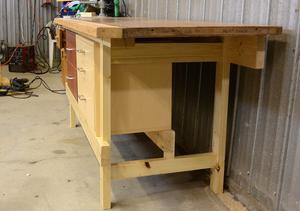 The workbench has a bit of a Japanese look to it, I think. I like the style, though
it was not at all intentional. I hadn't measured the door that I used for the top, so assumed
it wasn't as long. That, and the size of the drawer units dictated other dimensions.
It's regrettable that the drawers are only 60% as deep as they could be under that bench.
The workbench has a bit of a Japanese look to it, I think. I like the style, though
it was not at all intentional. I hadn't measured the door that I used for the top, so assumed
it wasn't as long. That, and the size of the drawer units dictated other dimensions.
It's regrettable that the drawers are only 60% as deep as they could be under that bench.
But the whole idea was to make it quick and easy. If I wasn't using existing drawer
units, I would have integrated far more, and deeper, drawers
like with this one
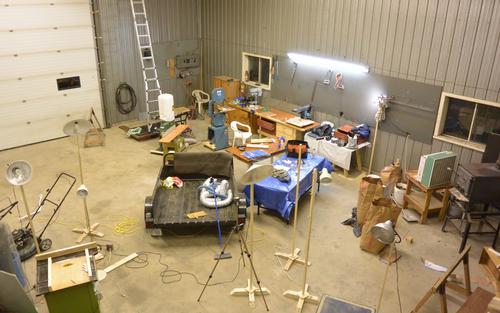 You might be wondering where this workbench is. It's in a large 30'x40' (9x12m)
workshop building
that used to be rented out. With such a large space, I figured this would be
a good place to set up a workshop. But it's a 45 minute drive from my house,
so I'm not sure how much I'll end up using it. I'm trying to avoid spending
too much time and money
setting it up. The space itself may need a lot of work to make it as suitable
for shooting video as my basement shop. There is too much echo and I don't like
the sheet metal walls much either.
You might be wondering where this workbench is. It's in a large 30'x40' (9x12m)
workshop building
that used to be rented out. With such a large space, I figured this would be
a good place to set up a workshop. But it's a 45 minute drive from my house,
so I'm not sure how much I'll end up using it. I'm trying to avoid spending
too much time and money
setting it up. The space itself may need a lot of work to make it as suitable
for shooting video as my basement shop. There is too much echo and I don't like
the sheet metal walls much either.
This was in early 2014, and later that year I
built a scaffold so I could paint the shop. When we moved out to the property
three years later,
swapped it for my good
workbench and
put this one in the basement of the house.
| 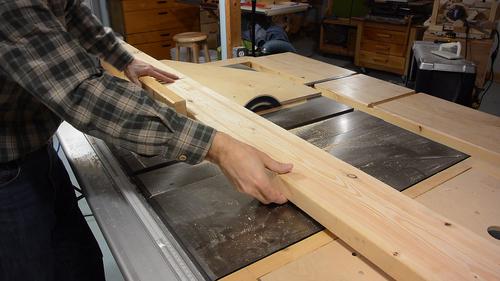
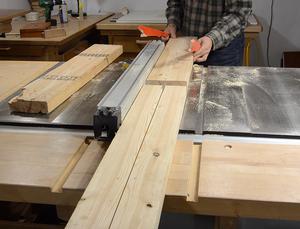 I wanted to build a quickie workbench, using some scrap 2x4s and 2x6s I found
in the garbage. I started by crosscutting lengths for the legs from a 2x6
using my table saw sled, then ripping the pieces
of 2x6 to make the legs. A sturdy sled makes cross cutting an eight-foot
2x6 easy. No need for a chop saw.
I wanted to build a quickie workbench, using some scrap 2x4s and 2x6s I found
in the garbage. I started by crosscutting lengths for the legs from a 2x6
using my table saw sled, then ripping the pieces
of 2x6 to make the legs. A sturdy sled makes cross cutting an eight-foot
2x6 easy. No need for a chop saw.
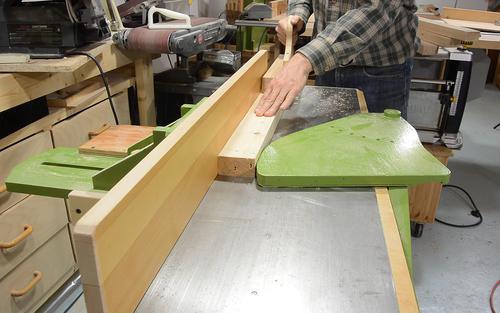
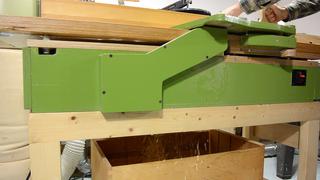
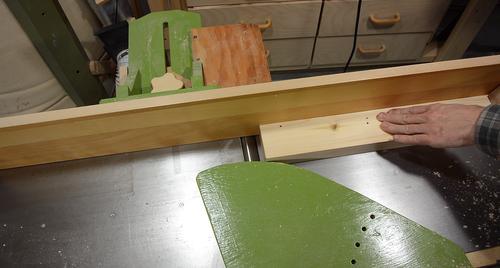
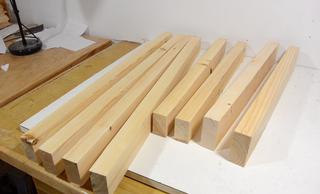
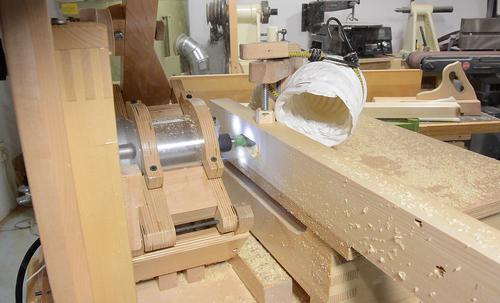
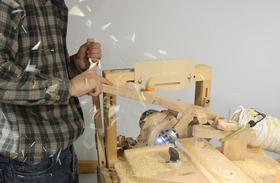
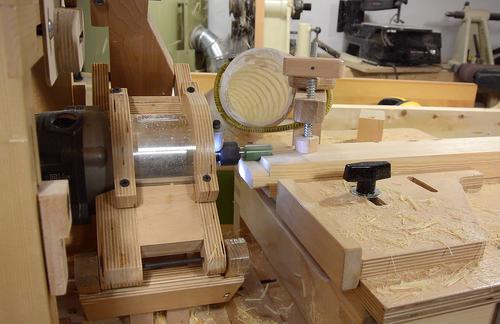
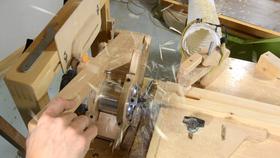
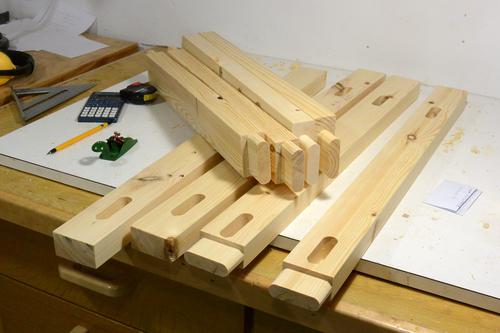























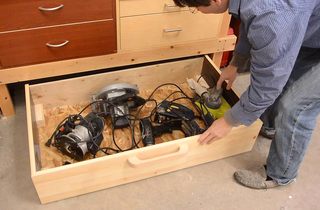 A drawer to go under this workbench
A drawer to go under this workbench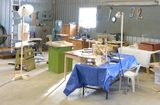 My big garage workshop
My big garage workshop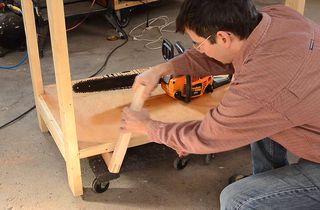 Dolly movable workbench
Dolly movable workbench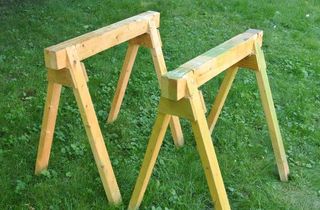
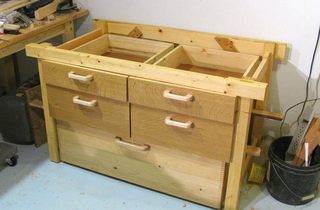
 Making the pantorouter
Making the pantorouter
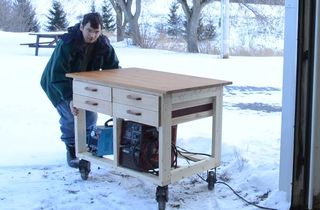 Workbench on wheels
Workbench on wheels